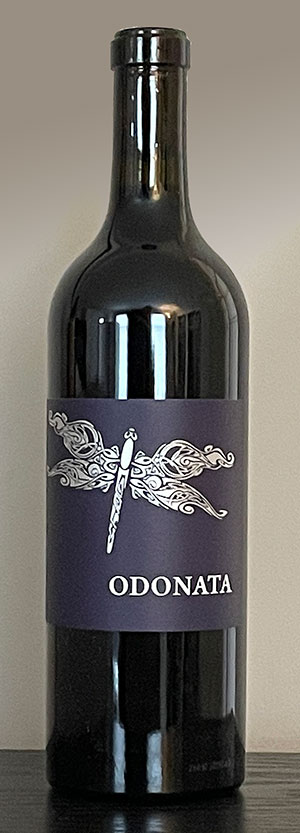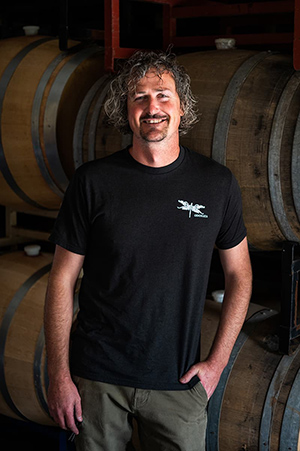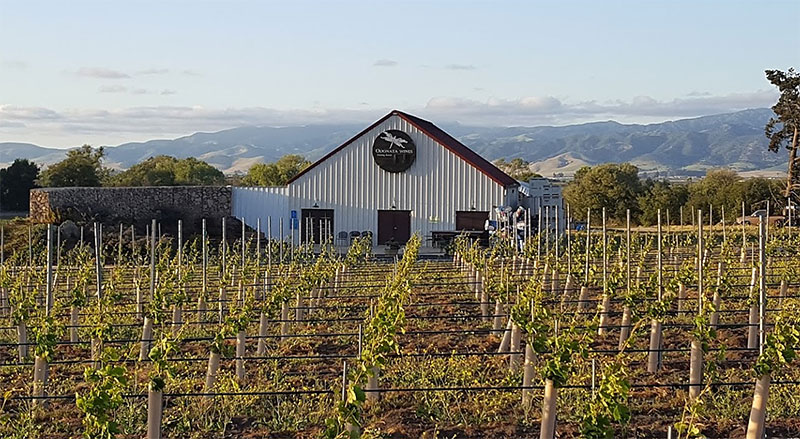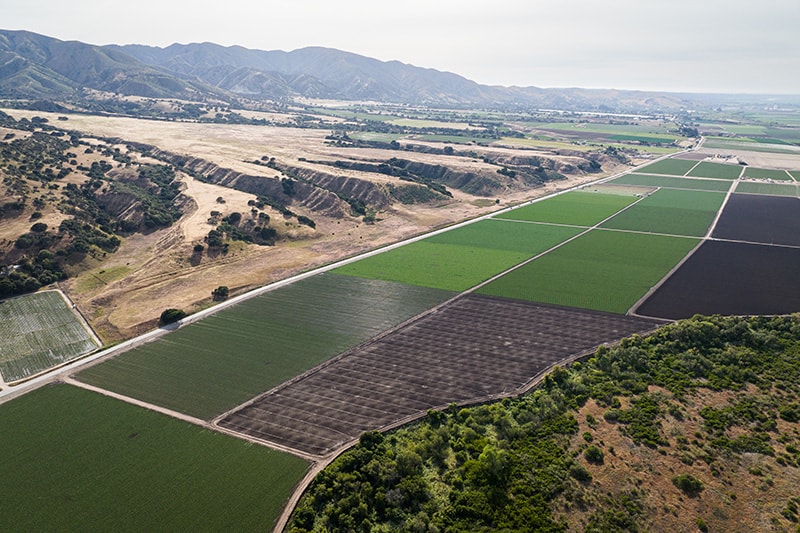
Odonata is a small boutique winery near Salinas, California. It is owned and operated by Denis Hoey, who traveled a winding road from business management, to would-be firefighter, to brewery worker, and finally to winemaker.
Hoey is a native of Sacramento, and grew up in a family that enjoyed wines of all kinds. In 2004 he graduated from the University of California at Santa Cruz with a degree in Business Management. But before he did any work in that field, he landed a job at Bison Organic Brewery in San Jose, where he learned sanitizing protocols and how to run a bottling line.
More profoundly, he soon met Jeff Emery, who had just taken over as owner and winemaker at Santa Cruz Mountain Vineyard. SCMV was started in 1975 by Ken Burnap, who based his winemaking on Old World approaches such as moderate levels of alcohol and oak, with the goal that the true characteristics of the grape varieties are expressed. Burnap passed that philosophy down to Emery, who in turn guided Hoey in that direction. Once Hoey began his apprenticeship, his life course was permanently altered. He became the production manager for SCMV before starting Odonata Wines in Santa Cruz in 2005. That year production was a mere 65 cases. By 2008 that was up to a still modest 150 cases, mostly Petite Sirah. Production is now about 6,000 cases, of which 1,000 are bubblies.
After 10 years of working with Emery, in 2014 Hoey decided to leave SCMV and devote himself exclusively to Odonata. He and his wife, Claire, were able to buy the short-lived Marilyn Remark Winery in the Santa Lucia Highlands, moving Odonata farther south of Santa Cruz, where they are raising their family and running the winery. Their property includes a two-acre vineyard, production facility, and tasting room.

Odonata produces small batches of wine with a focus on local grapes that are either organically or sustainably grown. Since the inaugural vintage in 2005, (released when he was just 21 years old) Hoey has worked closely with local growers to ensure the highest quality grapes are selected for his carefully crafted, small-lot wines.
As a still-young man, Hoey continues to develop his winemaking knowledge and techniques, and believes that blending Old World methods and attitudes with New World techniques gives him the best of both worlds. Hoey shared, “I subscribe to the Old World idea of start with a good product and just don’t mess it up. If its not messed up you don’t have to fix it. I’m very non-interventional with the wines. My winemaking philosophy is very hands off and I am only there to guide the wines, and with that said some guidance is found through modern lab tech and common sense.” He has three vineyards: the 1.5-acre Falcon Hill in the Santa Cruz Mountains where he grows Pinot Noir. Petite Sirah, Syrah, Grenache, Mourvedre, and Sangiovese come from the 10-acre Machado Creek in the Santa Clara Valley, and the estate vineyard at Odonata is planted to Viognier. Hoey sources additional fruit from around the Central Coast, seeking out growers committed to sustainability and organic practices.
During a picnic with his wife, Hoey was intrigued by the “ton of dragonflies flying around,” and he decided that Odonata would make a good name for his new winery, as Odonata is the scientific name for insects that include dragonflies and damselflies.


Odonata Malbec 2019
Remarkably for such a small operation, Hoey makes 16 red wines (and five whites), but not all of them are always available at the same time. This selection is 100% Malbec, with fruit sourced from the Pedregal vineyard near Holsiter in San Benito County. Hoey has been working this vineyard since 2017. The grapes were punched down gently throughout the cold soak, fermentation, and extended maceration which totaled 14 days. The new wine was passed directly to barrels, which were 30% new oak, 50% French and 50% Hungarian, and then aged 18 months.
This wine is a nice dark purple. There is plenty of blackberry on the nose, which follows on the palate with the addition of tart plum moderated by a hint of sweetness. The acidity and soft tannins are in excellent balance. It is all wrapped in a rich mouthfeel. 320 cases were produced. ABV is 14.2%.
Note: This selection is guilty of Bloated Bottle Syndrome, which I’m calling out for bottles that weigh more than the wine they contain. The web site of nearly every winery will usually include a mention of the operation’s dedication to “sustainability” and “stewardship.” Unfortunately, this often seems only to extend to the property itself. Many “premium” wines like this one come in heavier bottles to allegedly denote quality. This one weighs in at 807 grams. Not the worst I’ve ever seen, certainly, but still a violation. (As an example of a more typical bottle, Estancia Cabernet’s comes in at 494 grams.) That’s a lot of extra weight to be shipping around the country. By comparison, the wine inside, as always, only weighs 750 grams. Even sparkling wine bottles often are just a little heavier than this one, and those are made to withstand high internal pressure. Unfortunately, this sort of “bottle-weight marketing” is becoming more common, especially at higher price points. But there are other ways to denote quality without weight: unusual label designs, foils, wax dipping, etc.
Plastic bottles have a lower environmental impact than glass, 20% to 40% less, in fact. And, bag-in-box packages are even less than plastic bottles. (Unfortunately, current bag technology will only keep unopened wine fresh for about a year, so they are only suitable for wines to be consumed upon release from the winery; that’s about 90% of all wine sold though.)
The carbon footprint of global winemaking and global wine consumption is nothing to scoff at. The latter, which requires cases of wine be shipped around the world, imprints a deep carbon footprint. Because wine is so region-specific, and only so many regions can create drinkable bottles, ground and air transportation is responsible for nearly all of the wine industry’s CO2 emissions.
Top of page: https://winervana.com/blog/
